Abstract
The present studies indicate that accumulation of digoxin by intact human erythrocytes is the result of two processes: binding of digoxin to the erythrocyte membrane and uptake of digoxin across the membrane into the cell. In contrast, accumulation of ouabain by human erythrocytes is entirely attributable to binding of this glycoside to the plasma membrane. Digoxin binding to the erythrocyte membrane involves a single class of binding sites, is a saturable function of the extracellular digoxin concentration, reversible, temperature-sensitive, dependent on the cation composition of the incubation medium, inhibited by other cardioactive steroids, and correlates with the inhibition of erythrocyte potassium influx. Digoxin uptake across the membrane into the cell is also temperature-sensitive and reversible but is a linear function of the extracellular digoxin concentration, not altered by changes in the cation composition of the incubation medium, not inhibited by other cardioactive steroids, and does not correlate with inhibition of erythrocyte potassium influx. Digoxinspecific antibodies can both prevent and reverse effects of digoxin on potassium influx in human erythrocytes by virtue of the capacity of the antibodies to decrease the amount of digoxin that is bound to the erythrocyte membrane. These antibodies also reduce uptake of digoxin across the plasma membrane into the erythrocyte; however, this portion of cellular digoxin is not responsible for the observed inhibition of potassium influx. In the presence of digoxin-specific antibodies, the changes in digoxin binding to the erythrocyte membrane and in digoxin uptake across the membrane into the cell reflect the ability of the antibodies to form complexes with “free” digoxin molecules in the incubation medium and thereby decrease the effective concentration of digoxin.
Full text
PDF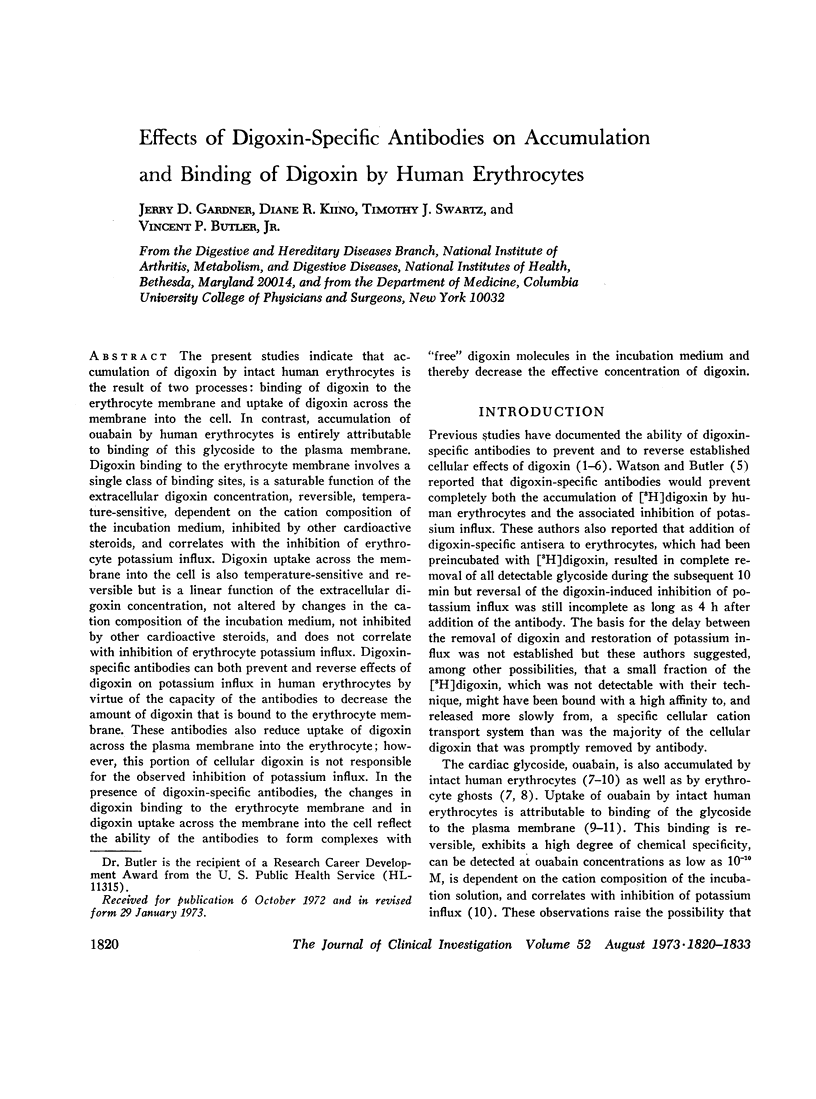
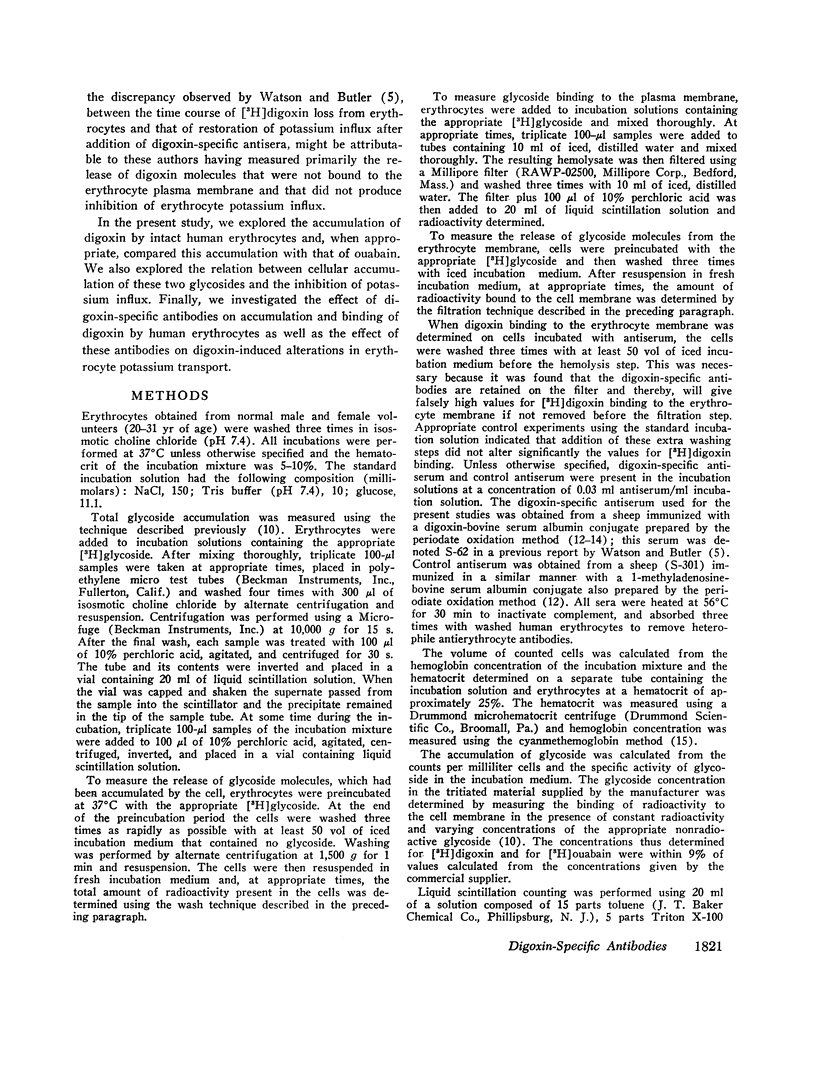
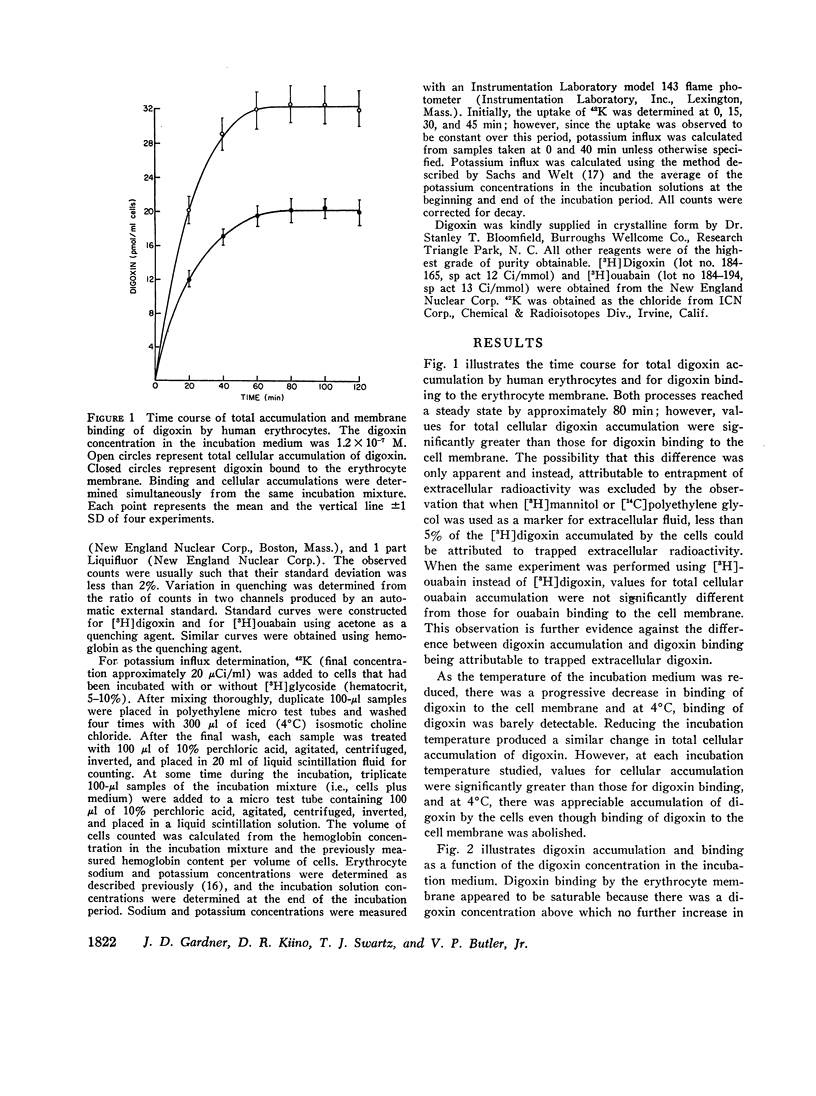
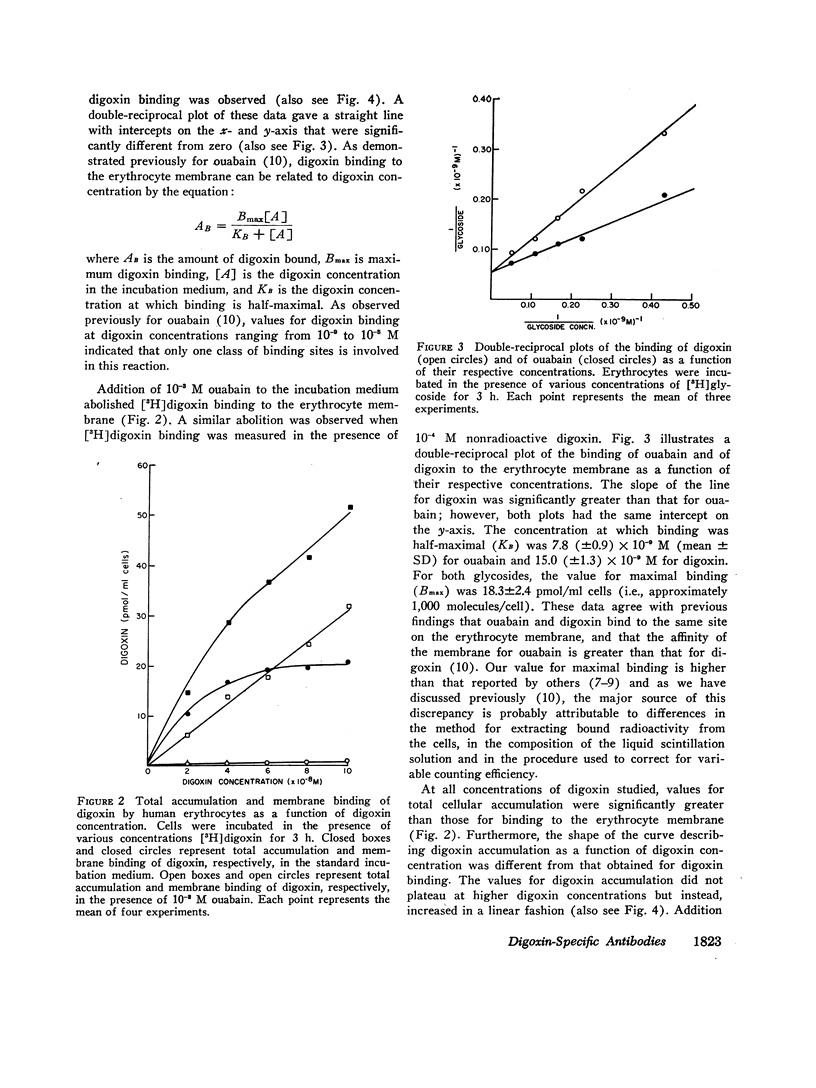
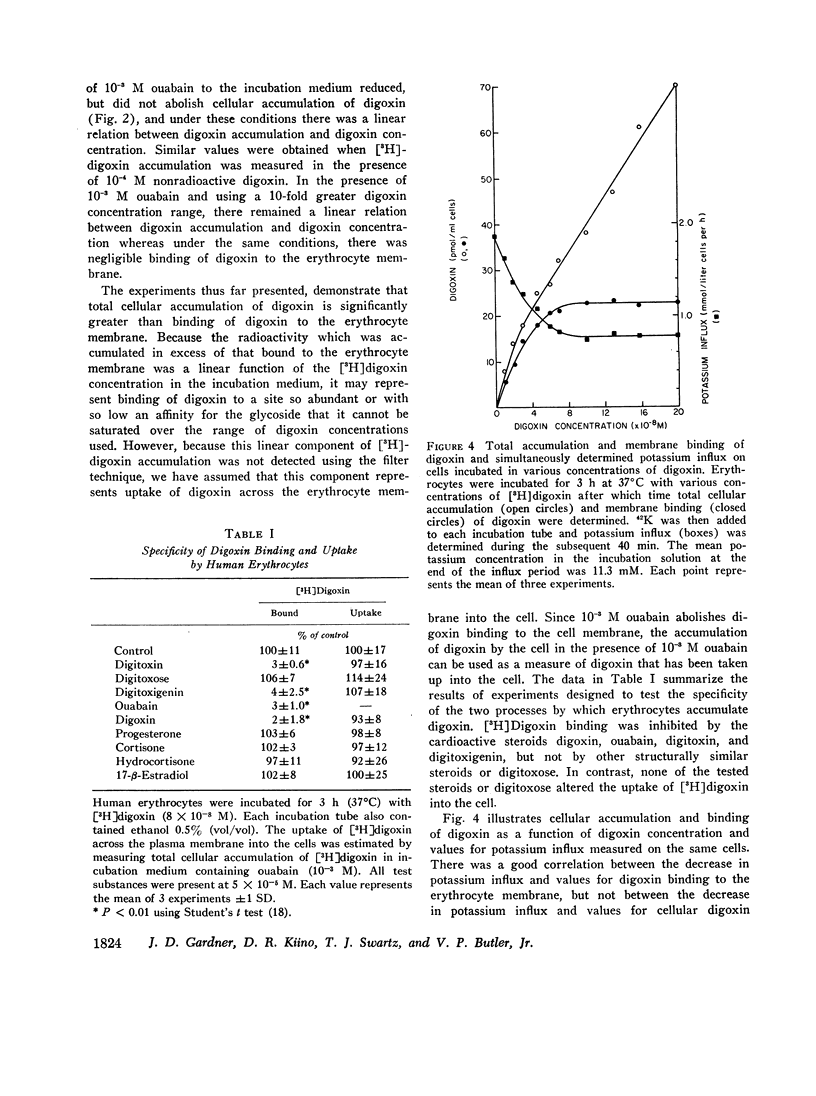
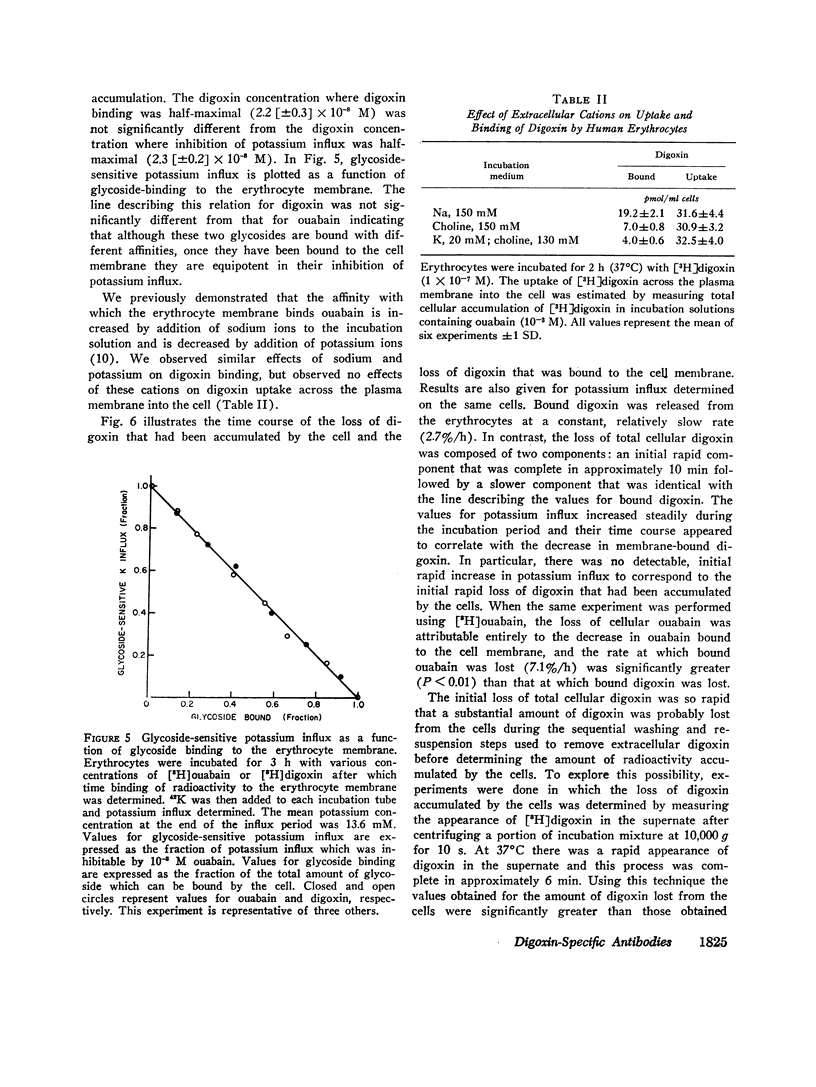
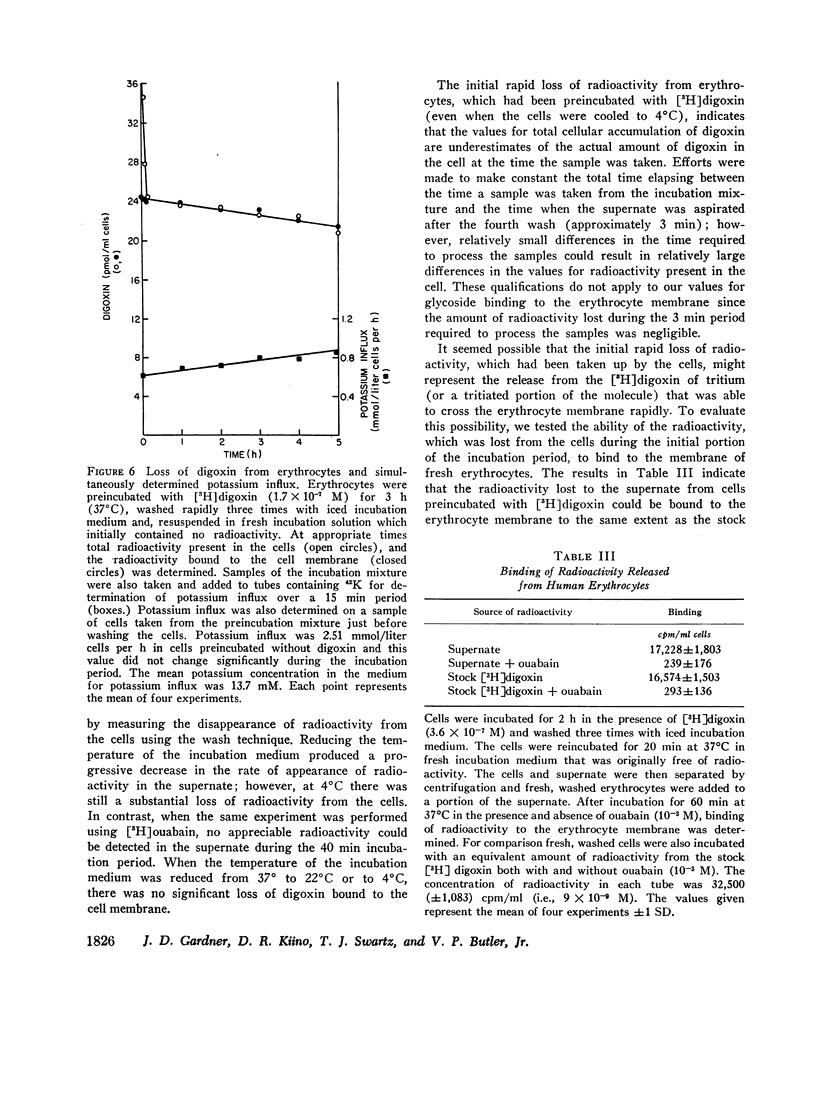
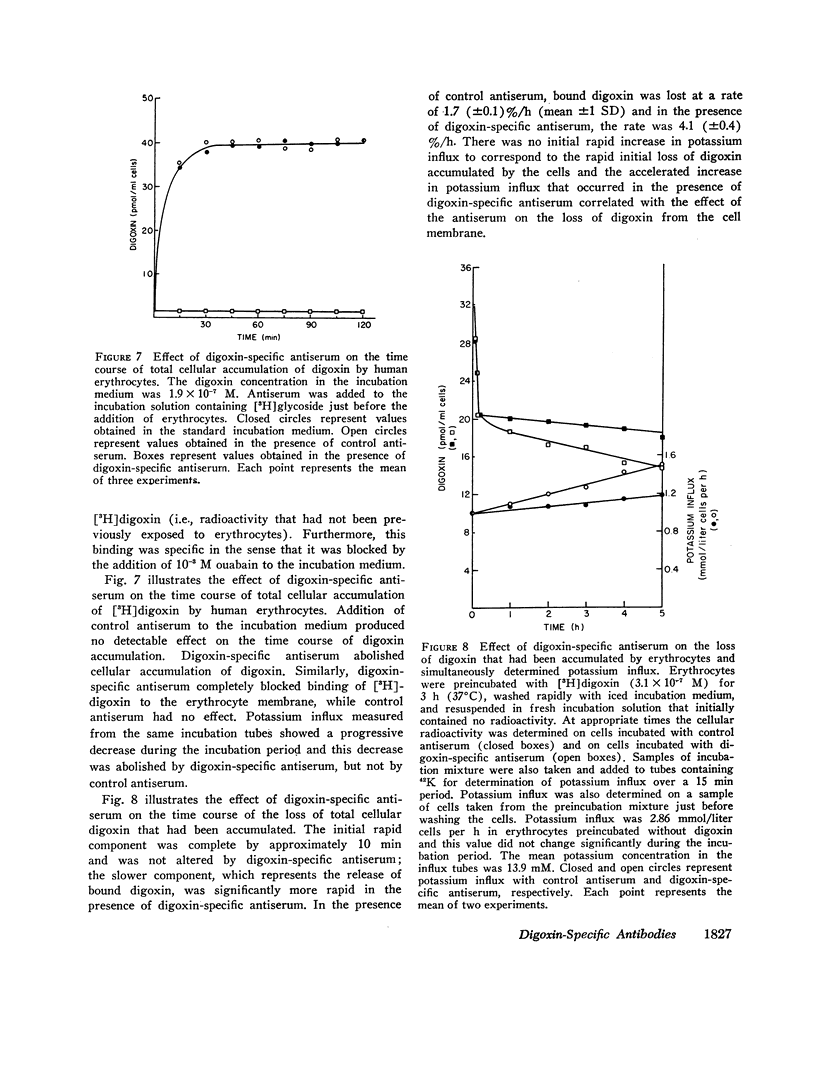
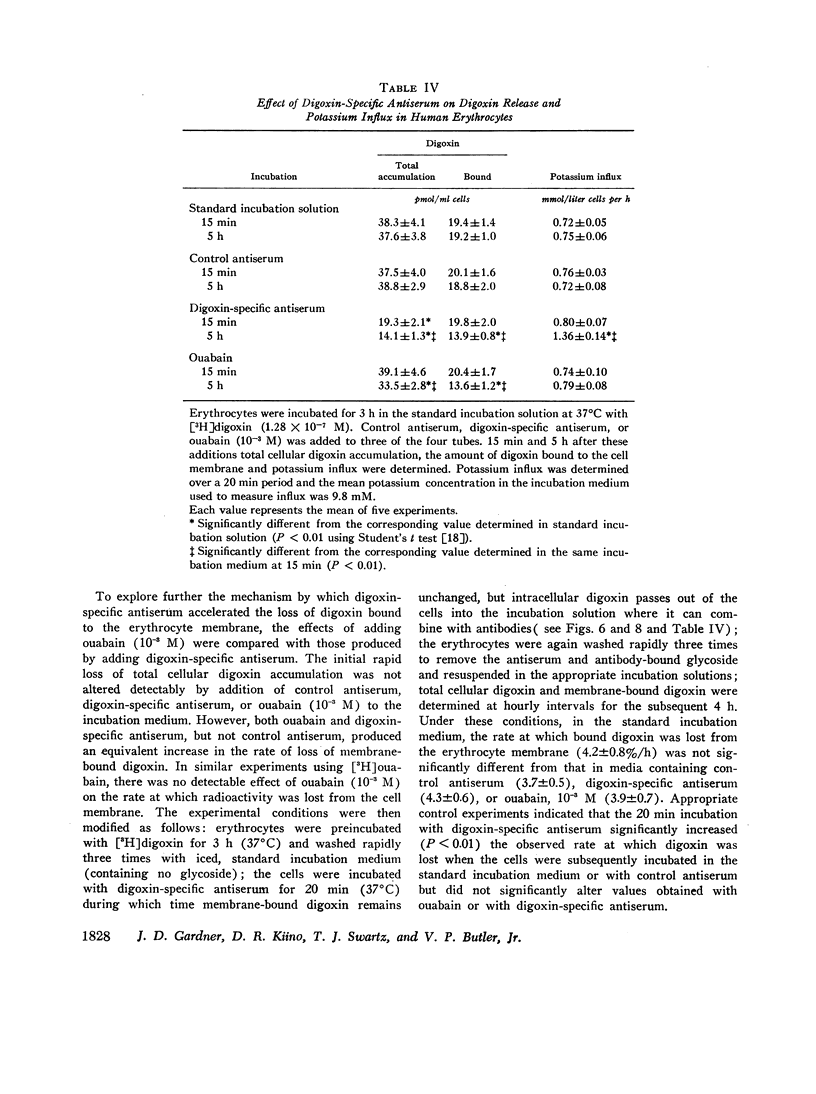
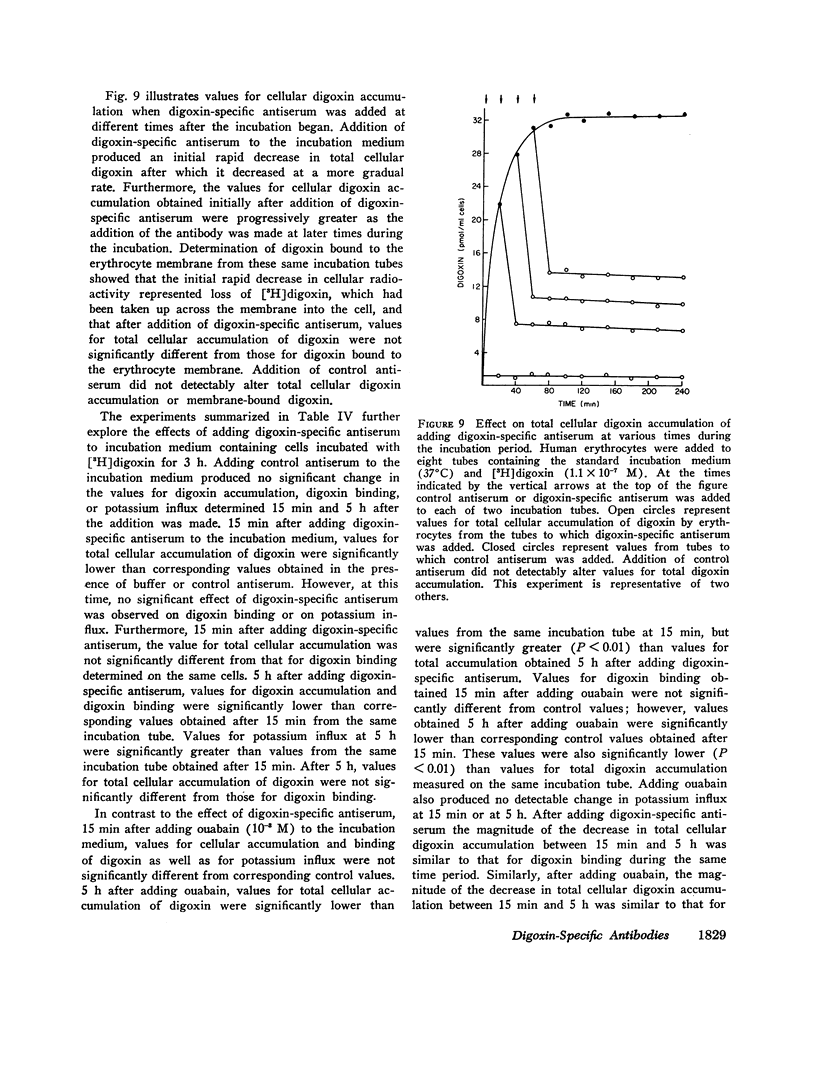
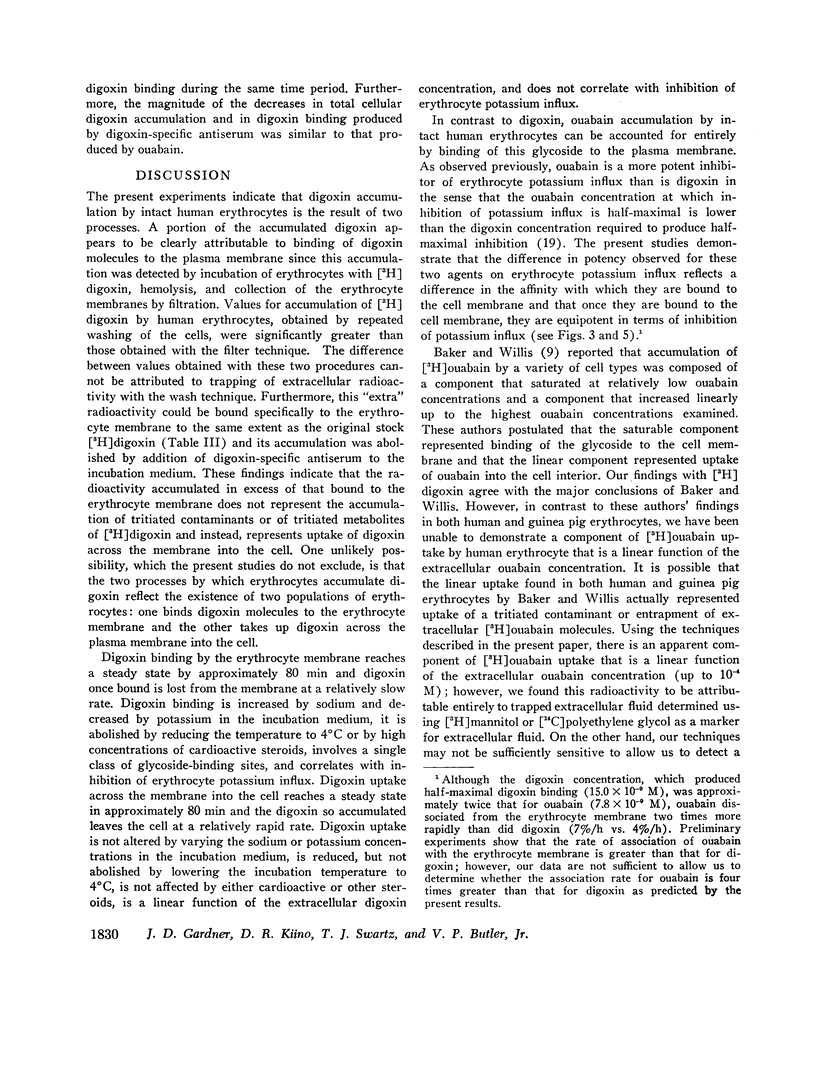
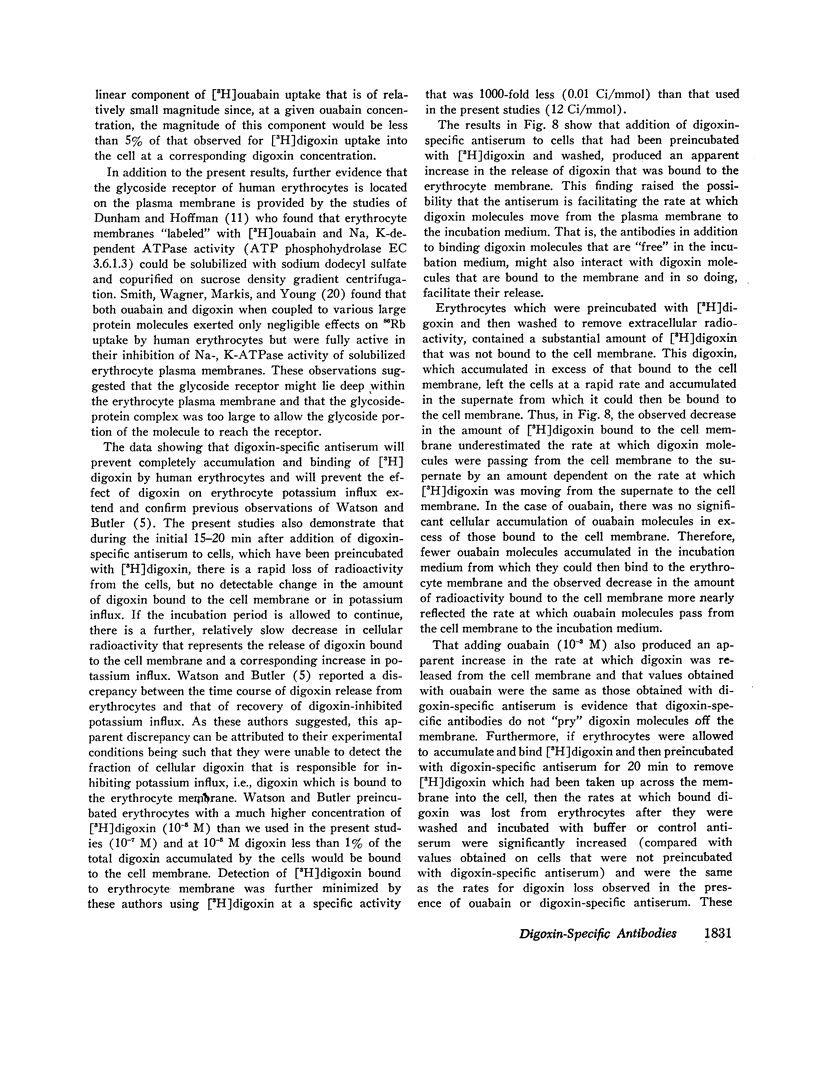
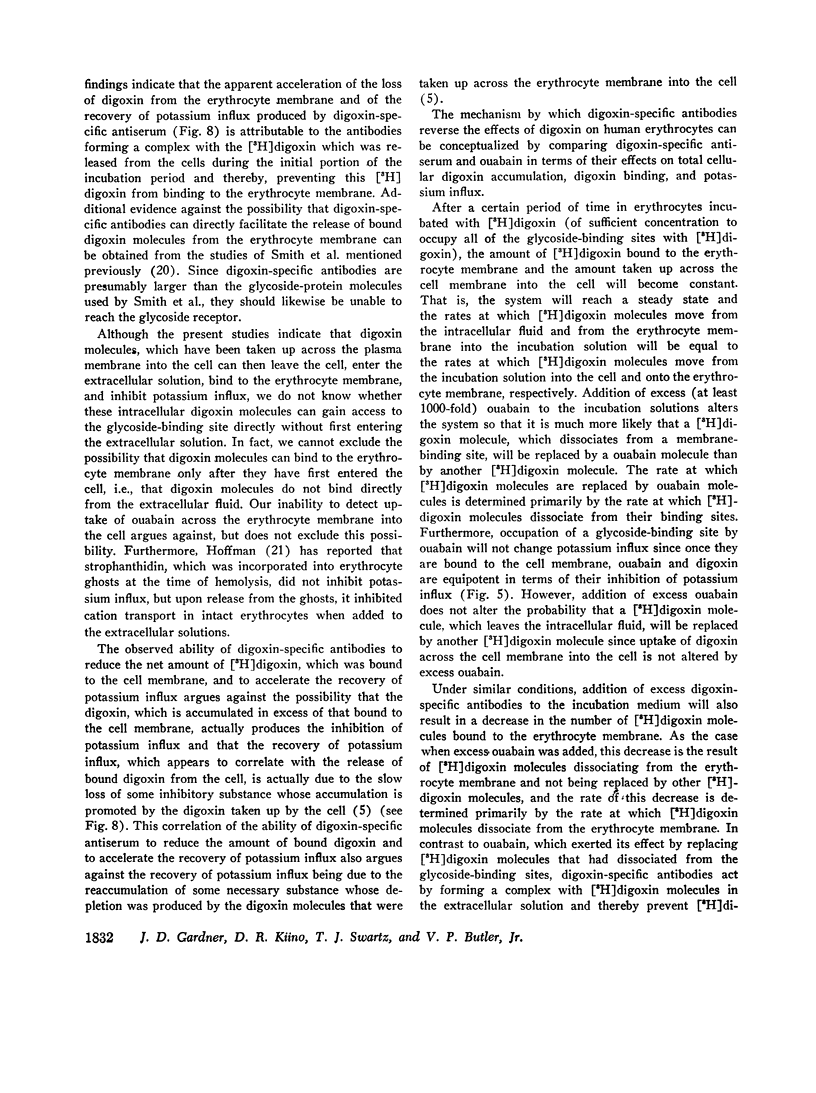
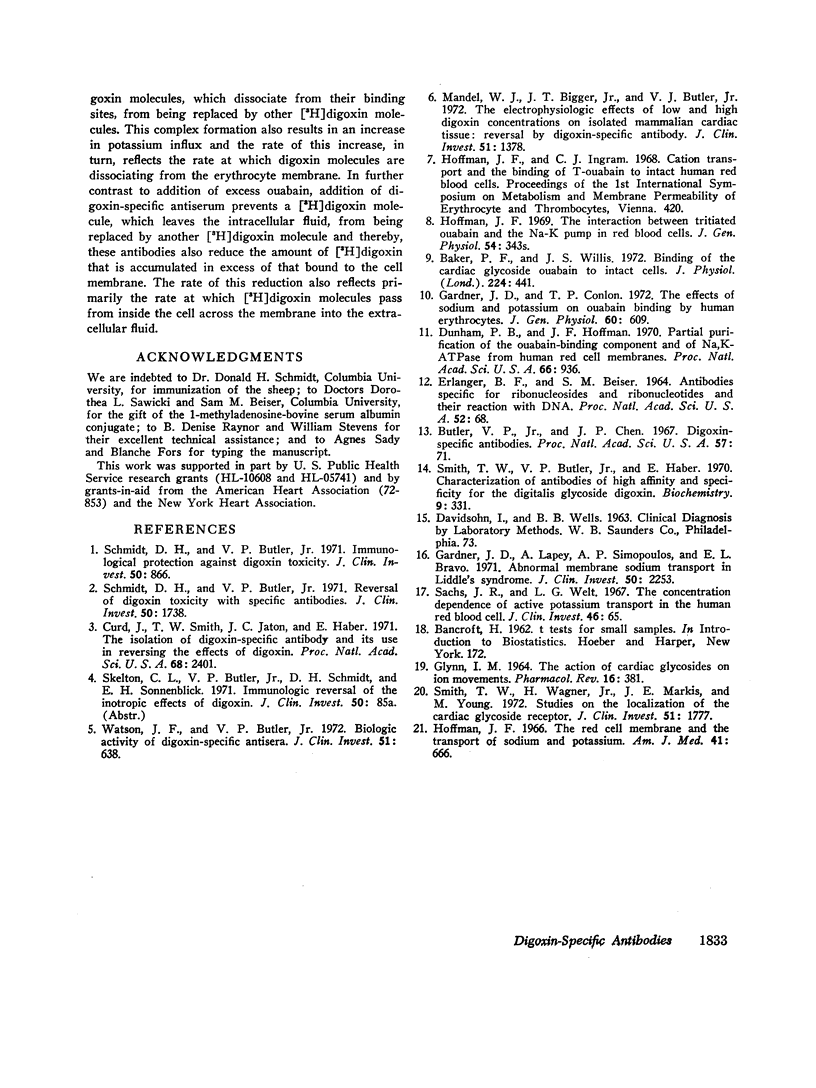
Selected References
These references are in PubMed. This may not be the complete list of references from this article.
- Baker P. F., Willis J. S. Binding of the cardiac glycoside ouabain to intact cells. J Physiol. 1972 Jul;224(2):441–462. doi: 10.1113/jphysiol.1972.sp009904. [DOI] [PMC free article] [PubMed] [Google Scholar]
- Butler V. P., Jr, Chen J. P. Digoxin-specific antibodies. Proc Natl Acad Sci U S A. 1967 Jan;57(1):71–78. doi: 10.1073/pnas.57.1.71. [DOI] [PMC free article] [PubMed] [Google Scholar]
- Curd J., Smith T. W., Jaton J. C., Haber E. The isolation of digoxin-specific antibody and its use in reversing the effects of digoxin. Proc Natl Acad Sci U S A. 1971 Oct;68(10):2401–2406. doi: 10.1073/pnas.68.10.2401. [DOI] [PMC free article] [PubMed] [Google Scholar]
- Dunham P. B., Hoffman J. F. Partial purification of the ouabain-binding component and of Na,K-ATPase from human red cell membranes. Proc Natl Acad Sci U S A. 1970 Jul;66(3):936–943. doi: 10.1073/pnas.66.3.936. [DOI] [PMC free article] [PubMed] [Google Scholar]
- ERLANGER B. F., BEISER S. M. ANTIBODIES SPECIFIC FOR RIBONUCLEOSIDES AND RIBONUCLEOTIDES AND THEIR REACTION WITH DNA. Proc Natl Acad Sci U S A. 1964 Jul;52:68–74. doi: 10.1073/pnas.52.1.68. [DOI] [PMC free article] [PubMed] [Google Scholar]
- GLYNN I. M. THE ACTION OF CARDIAC GLYCOSIDES ON ION MOVEMENTS. Pharmacol Rev. 1964 Dec;16:381–407. [PubMed] [Google Scholar]
- Gardner J. D., Conlon T. P. The effects of sodium and potassium on ouabain binding by human erythrocytes. J Gen Physiol. 1972 Nov;60(5):609–629. doi: 10.1085/jgp.60.5.609. [DOI] [PMC free article] [PubMed] [Google Scholar]
- Gardner J. D., Lapey A., Simopoulos P., Bravo E. L. Abnormal membrane sodium transport in Liddle's syndrome. J Clin Invest. 1971 Nov;50(11):2253–2258. doi: 10.1172/JCI106722. [DOI] [PMC free article] [PubMed] [Google Scholar]
- Hoffman J. F. The red cell membrane and the transport of sodium and potassium. Am J Med. 1966 Nov;41(5):666–680. doi: 10.1016/0002-9343(66)90029-5. [DOI] [PubMed] [Google Scholar]
- Mandel W. J., Bigger J. T., Jr, Butler V. P., Jr The electrophysiologic effects of low and high digoxin concentrations on isolated mammalian cardiac tissue: reversal by digoxin-specific antibody. J Clin Invest. 1972 Jun;51(6):1378–1387. doi: 10.1172/JCI106933. [DOI] [PMC free article] [PubMed] [Google Scholar]
- Sachs J. R., Welt L. G. The concentration dependence of active potassium transport in the human red blood cell. J Clin Invest. 1967 Jan;46(1):65–76. doi: 10.1172/JCI105512. [DOI] [PMC free article] [PubMed] [Google Scholar]
- Schmidt D. H., Butler V. P., Jr Immunological protecion against dixin toxicity. J Clin Invest. 1971 Apr;50(4):866–871. doi: 10.1172/JCI106558. [DOI] [PMC free article] [PubMed] [Google Scholar]
- Schmidt D. H., Butler V. P., Jr Reversal of digoxin toxicity with specific antibodies. J Clin Invest. 1971 Aug;50(8):1738–1744. doi: 10.1172/JCI106663. [DOI] [PMC free article] [PubMed] [Google Scholar]
- Smith T. W., Butler V. P., Jr, Haber E. Characterization of antibodies of high affinity and specificity for the digitalis glycoside digoxin. Biochemistry. 1970 Jan 20;9(2):331–337. doi: 10.1021/bi00804a020. [DOI] [PubMed] [Google Scholar]
- Smith T. W., Wagner H., Jr, Markis J. E., Young M. Studies on the localization of the cardiac glycoside receptor. J Clin Invest. 1972 Jul;51(7):1777–1789. doi: 10.1172/JCI106979. [DOI] [PMC free article] [PubMed] [Google Scholar]
- Watson J. F., Butler V. P., Jr Biologic activity of digoxin-specific antisera. J Clin Invest. 1972 Mar;51(3):638–648. doi: 10.1172/JCI106853. [DOI] [PMC free article] [PubMed] [Google Scholar]


